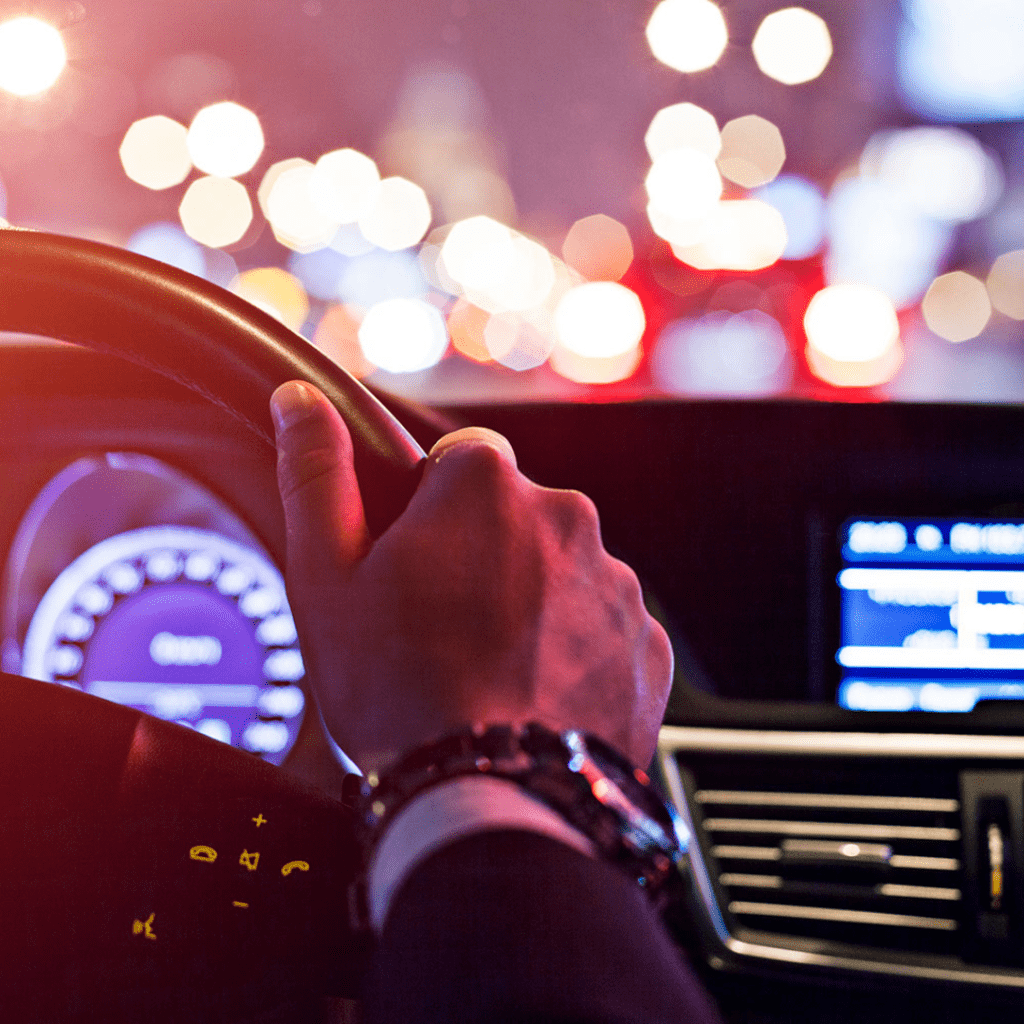Nighttime driving can pose several challenges, leading to eye strain and fatigue, especially during long distances. Factors like poor lighting, glare from headlights, and reduced visibility can strain your eyes and increase the risk of accidents.
But don’t worry, this article is here to help! We will provide you with practical tips that can reduce eye strain while driving at night, improve your vision, and ensure your safety on the road
Tip 1: Clean and Adjust Your Windshield and Mirrors
Make sure to clean and adjust your windshield, side mirrors, and rearview mirror before you begin driving at night. Dirty or improperly aligned mirrors can cause reflections and distortions, which can impair your vision of the road and other vehicles.
To optimize your mirror usage, adjust them in such a way that they reflect light from behind you, rather than directly in your eyes. If you’re driving on a busy road, avoid using high beams unless you’re on a deserted road.

Tip 2: Use Anti-Glare Glasses
Investing in a pair of anti-glare glasses can be beneficial for reducing light reflection and enhancing contrast while driving at night. These glasses can effectively diminish the amount of glare caused by the headlights of oncoming vehicles and streetlights.
Tip 3: Take Breaks and Rest Your Eyes
Driving for extended periods at night can cause eye strain, fatigue, and reduced focus. To combat these issues, it is recommended that you take breaks every two hours.
During these breaks, rest your eyes by either closing them or looking away from the road.
Tip 4: Stay Hydrated
To maintain eye health and reduce eye strain during nighttime driving, it’s essential to stay hydrated. Drinking ample water is crucial, while it’s important to avoid caffeine or alcohol consumption as they can lead to dehydration and hinder vision.
Additionally, dehydration may result in dry eyes that are not only uncomfortable but can also cause eye strain.
Tip 5: Keep Your Car’s Interior Lights Dim
When you’re driving at night, the interior lights in your car can cause eye strain. Bright interior lights reduce the contrast between the darkness outside and the light inside your car, which can make it harder to see the road. To prevent this, it’s important to keep the interior lights dim or turned off.
Bright interior lights can also lead to eye fatigue and distract you from driving, so it’s important to avoid them as much as possible.
By keeping your interior lights dim or turned off, you can reduce the risk of eye strain and ensure that you stay focused on the road ahead.
Tip 6: Adjust Your Dashboard Lights

Bright dashboard lights can cause eye strain and affect your vision while driving. To prevent this, adjust your dashboard lights to the lowest possible level that allows you to see the gauges and indicators without straining your eyes.
It is crucial to avoid using bright and distracting dashboard lights as they can impair your vision and distract you from the road.
Keep your focus on the road and adjust your dashboard lights to a comfortable level that does not compromise your visibility. By doing so, you can reduce eye strain and ensure a safer driving experience.
Tip 7: Avoid Staring Directly at Oncoming Headlights
Looking directly at the headlights of oncoming vehicles may cause eye strain and can also lead to temporary obscuration of vision and impede road visibility.
To overcome this challenge, shift your gaze slightly towards the other side of the road and rely on your peripheral vision to monitor your driving.
Tip 8: Use Your Defroster and Wipers to Improve Visibility
If the weather is foggy or rainy, use your defroster and wipers to keep your windshield clean and improve visibility. Clean windshield will help reduce the glare and reflections from other headlights.

Tip 9: Ensure you are well rested
To reduce the risk of eye strain while driving at night, it’s important to be well-rested and avoid driving when tired, sleep-deprived, or under the influence of alcohol.
This can cause discomfort, watering, and blurred vision, adding to the strain on your eyes. Therefore, make sure you get enough sleep and avoid alcohol before getting behind the wheel at night
Tip 10: Get Your Eyes Checked Regularly
Night blindness can be caused by certain medical and eye issues, making it inadvisable to drive at night. Nyctalopia is the medical term for this condition, which makes it challenging for an individual to see in low light conditions.
Several eye and health problems such as high myopia, vitamin A deficiency, cataracts, glaucoma, diabetes, and genetic conditions like retinitis pigmentosa and usher syndrome can lead to night blindness.
If you experience difficulty seeing in low light conditions or night blindness, it’s best to seek diagnosis and management from an eye doctor.
Conclusion:
When you’re driving at night, it’s important to be extra attentive and take necessary precautions to ensure your safety and prevent eye strain and fatigue. With these tips in mind, you can enjoy a safe and comfortable night drive.
To maintain good eye health and prevent eye strain while driving, it’s crucial to have regular eye exams. You can schedule an eye exam with your optometrist to ensure that your eyes are healthy and your vision is clear.
#Nighttime #driving #eyestrain #safety #tips #reduce #prevent #headlights #vision #glare #fatigue
